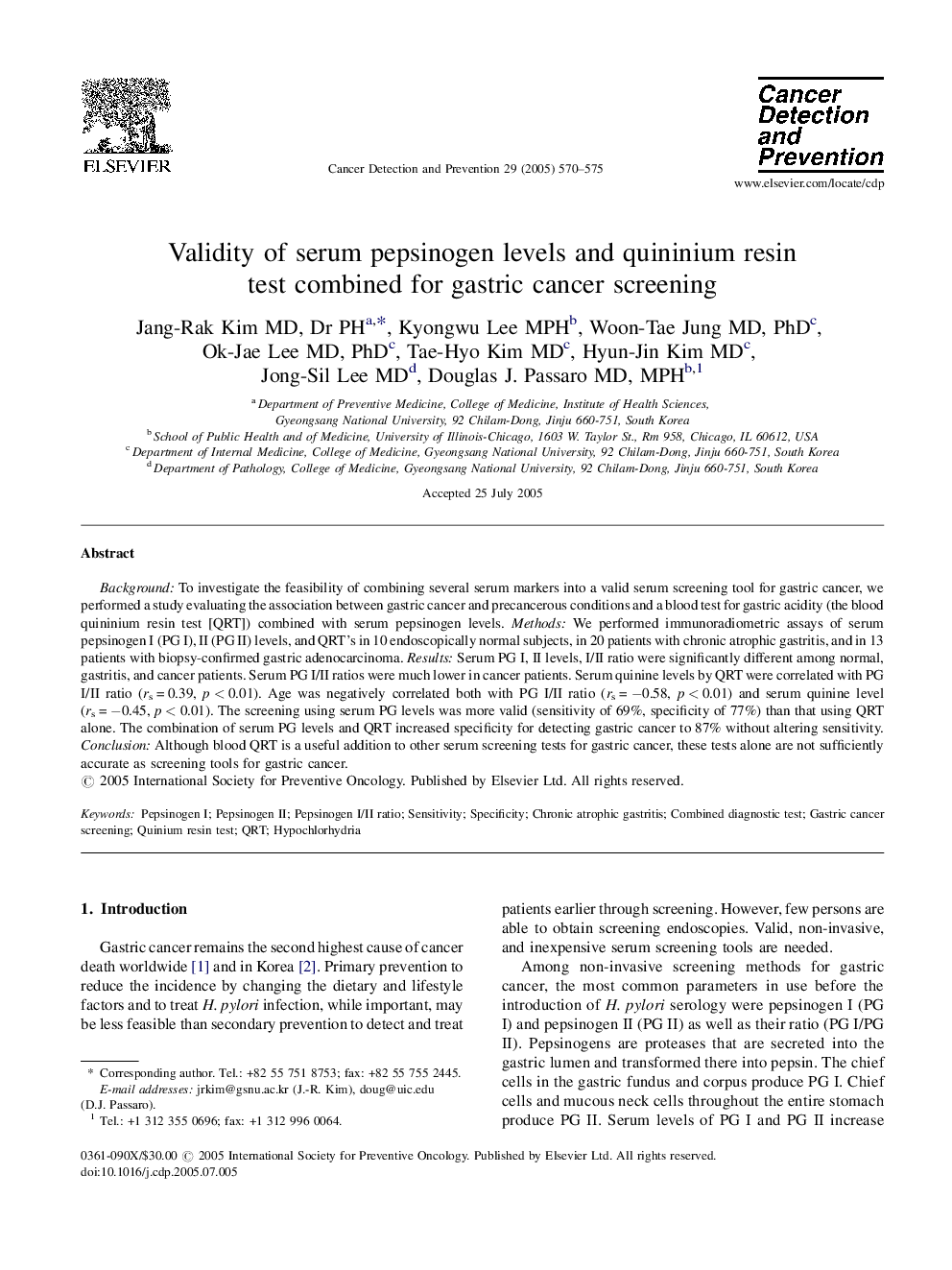| Article ID | Journal | Published Year | Pages | File Type |
|---|---|---|---|---|
| 9905091 | Cancer Detection and Prevention | 2005 | 6 Pages |
Abstract
Background: To investigate the feasibility of combining several serum markers into a valid serum screening tool for gastric cancer, we performed a study evaluating the association between gastric cancer and precancerous conditions and a blood test for gastric acidity (the blood quininium resin test [QRT]) combined with serum pepsinogen levels. Methods: We performed immunoradiometric assays of serum pepsinogen I (PG I), II (PG II) levels, and QRT's in 10 endoscopically normal subjects, in 20 patients with chronic atrophic gastritis, and in 13 patients with biopsy-confirmed gastric adenocarcinoma. Results: Serum PG I, II levels, I/II ratio were significantly different among normal, gastritis, and cancer patients. Serum PG I/II ratios were much lower in cancer patients. Serum quinine levels by QRT were correlated with PG I/II ratio (rs = 0.39, p < 0.01). Age was negatively correlated both with PG I/II ratio (rs = â0.58, p < 0.01) and serum quinine level (rs = â0.45, p < 0.01). The screening using serum PG levels was more valid (sensitivity of 69%, specificity of 77%) than that using QRT alone. The combination of serum PG levels and QRT increased specificity for detecting gastric cancer to 87% without altering sensitivity. Conclusion: Although blood QRT is a useful addition to other serum screening tests for gastric cancer, these tests alone are not sufficiently accurate as screening tools for gastric cancer.
Keywords
Related Topics
Life Sciences
Biochemistry, Genetics and Molecular Biology
Cancer Research
Authors
Jang-Rak MD, Dr PH, Kyongwu MPH, Woon-Tae MD, PhD, Ok-Jae MD, PhD, Tae-Hyo MD, Hyun-Jin MD, Jong-Sil MD, Douglas J. MD, MPH,
